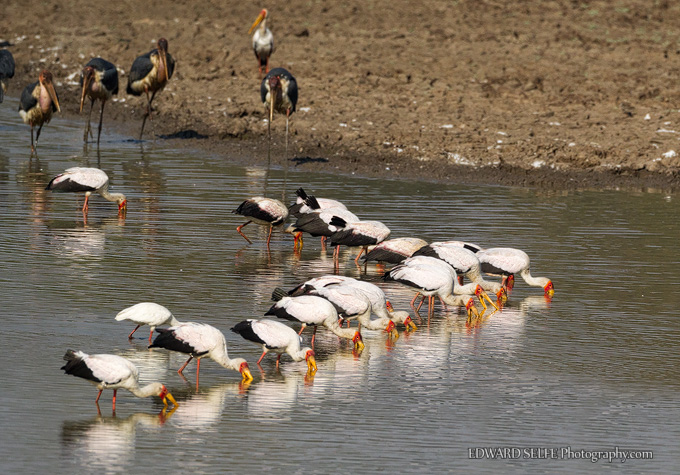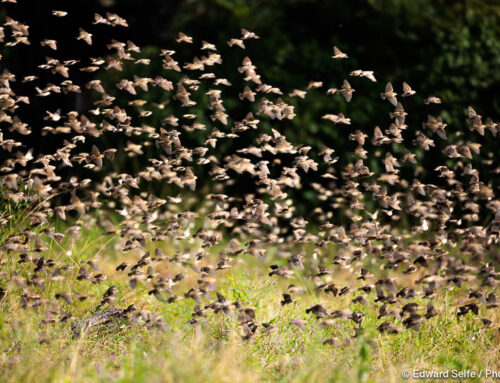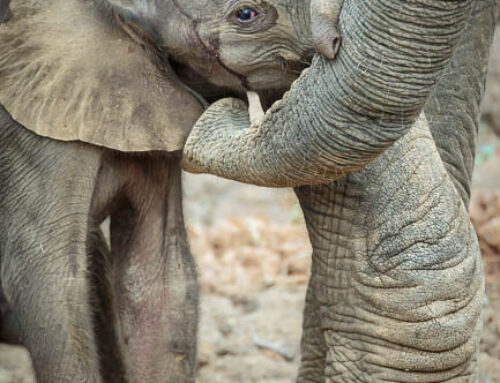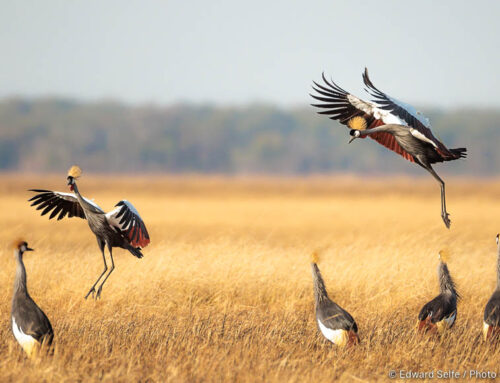As the last remaining lagoons dry up, hundreds of fish-eating birds come flock together to hoover up the remaining fish in the ever-reducing volume of water.
One of the largest lagoons in the area has been playing host to this astonishing spectacle over the last few days, and we’ve been there regularly to watch. Here’s the scene at Luangwa Wafwa.
The density of feeding birds is hard to imagine – this image shows just one small portion of the total event.
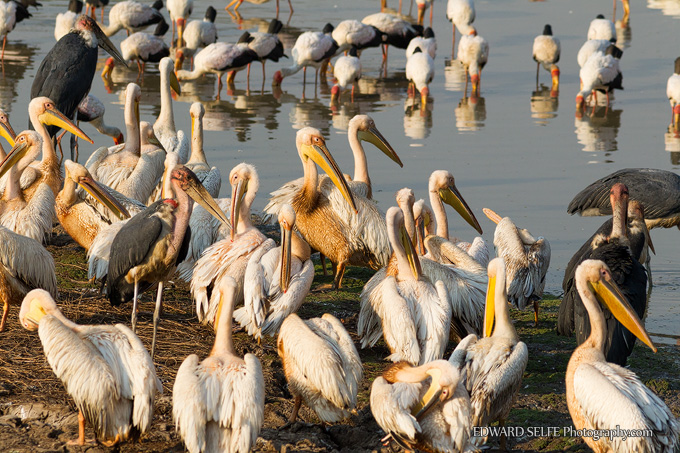
A juvenile Great White Pelican ‘sails’ on a patch of open water. With a huge body mass, it takes them a good few seconds to get airborne, so they tend to fly only when searching for another suitable lagoon.
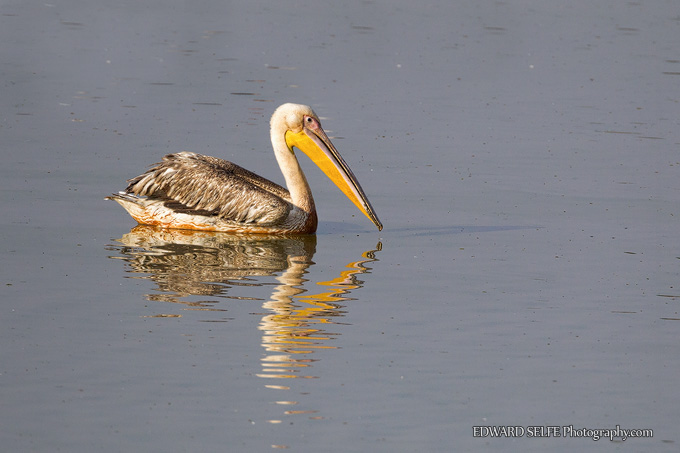
Little Egrets aren’t very common in the Luangwa, but I guess this one just couldn’t miss the feeding opportunity. The yellow feet are the diagnostic feature which separates them from other Egrets.
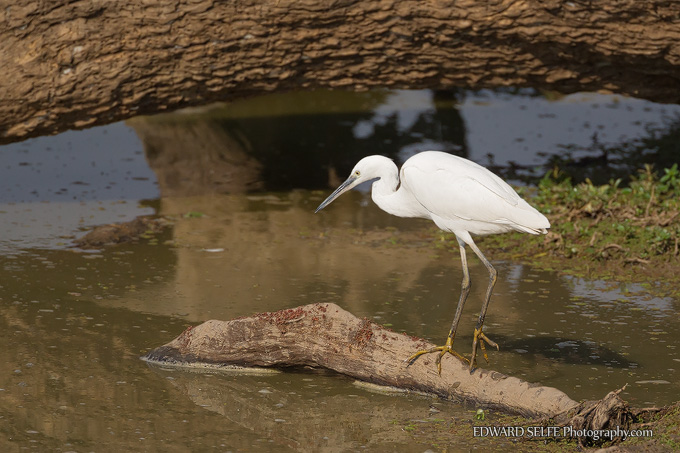
This Hammerkop (a relative of the Herons) sat obligingly on an exposed branch. While their diet is usually made up largely of frogs, they won’t turn down the chance to catch a few small fish.
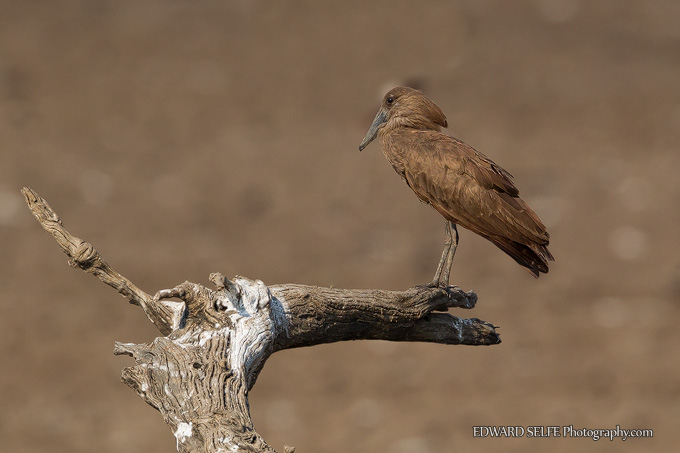
Great White Pelicans in a small group. Sometimes feeding together in the same place increases your chances of success – fish that are disturbed but missed by one bird may be caught by another.
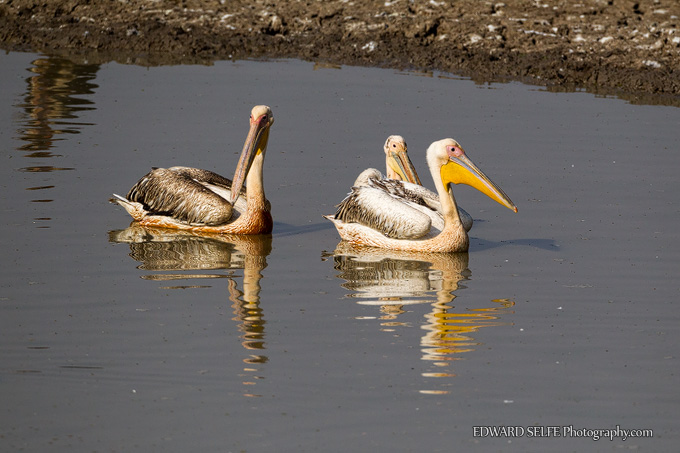
Yellow-billed Storks have developed the most advanced co-ordinated feeding techniques, walking in a long line like a police search team scouring for evidence at a crime scene.
